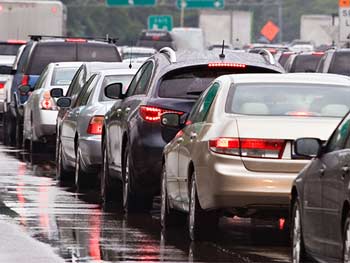
In October, 2016, the federal government set a goal of completely eliminating traffic deaths and injuries in the U.S. by 2046. Officials in the Department of Transportation revealed a plan that focuses on increasing seat belt usage; campaigns against drunken, drugged, and distracted driving; and increases the use of rumble strips (strips across the road that use vibration and rumbling to alert a driver of road changes or hazards).
The Department’s statement claimed that various technologies, including self-driving cars, will make it possible for the goal to be accomplished relatively quickly. Fully-autonomous vehicles, it is believed, could potentially eliminate all human error, which contributes to 94 percent of all crashes. Eliminating all, or almost all, traffic deaths and injuries through technology sounds awfully good, doesn’t it?
Hold on for a minute. The Transportation Department’s plan came about because of a 7.2 percent jump in traffic fatalities in 2015, the biggest annual percentage increase in 50 years. And, if you think that increase is upsetting, hear this: In the first six months of 2016 alone, highway deaths surged 10.4 percent over the same time period in 2015. And supposedly it’s mainly because of apps on smartphones, such as Snapchat (the cause of one publicized ultra-high-speed deadly crash), Waze, and even Pokemon Go. NHTSA administrator Mark Rosekind has commented for publication, “All of a sudden we’re losing ground. We have an immediate crisis on our hands and we also have a long-term challenge.”
So, since 2014, we’ve been going in the wrong direction in terms of reducing traffic casualties. That raises the question: Are zero traffic deaths even possible?
It seems as if new technologies could save lives, if fully-autonomous vehicles fulfill their promises. And yet other technological changes are distracting us, increasing the number of vehicular crashes and deaths at an alarming rate. Our smartphones, as they assist us with everything from navigating our trips (Waze) to showing off (Snapchat), turn out to be the prime suspects when it comes to the increase of casualties on our roads.
Not only that, it’s really too soon to assess whether fully-autonomous vehicles will fulfill any promises of eliminating crashes. While other accidents with self-driving cars have mostly been caused by human error, one crash in June, 2016, involving a Tesla killed the driver while the car was in automatic drfiving mode.
An analyst working for Kelley Blue Book, Karl Brauer, commented to The New York Times, “This is a bit of a wake-up call. People who were maybe too aggressive in taking the position that ‘We’re almost there,’ ‘This technology is going to be in the market very soon,’ maybe need to reassess that.”
One thing is certain: While the zero fatalities goal is admirable, it’s not yet clear whether it is realistic, or even remotely achievable. In the meantime, to help keep you and your family safe on the road, drive defensively at all times, and obey all the commonsense suggestions—don’t DUI, don’t use your phone, don’t speed. And, if you should happen to become involved in a serious accident that was not your fault, you might consider seeking legal assistance.
We’re listening. How can we help?
At the Law Offices of Steven H. Heisler, we have devoted our practice to defending the rights of personal injury victims. We know how traumatic a serious car accident can be for both the injured person and for his or her family. If you or a loved one was seriously injured in a vehicular accident, you may be entitled to various kinds of financial compensation, such as medical bills, lost wages, and pain and suffering. Keep in mind, however, that there is a statute of limitations – or a time limit – for filing personal injury claims. If you have been injured in an accident, you should not delay. Reach out to Steve, your Baltimore car accident lawyer, today for a complimentary initial consultation by calling (855) 396-2637 or using our online form.
